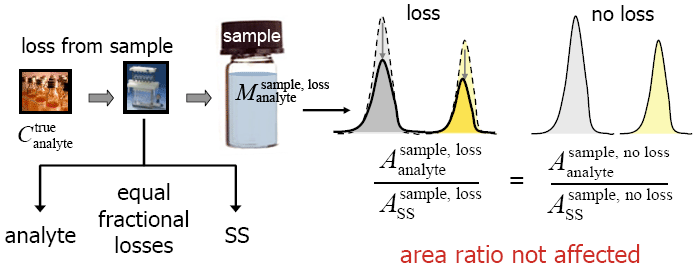Analyte loss and IS calibration
example: loss of analyte during solid phase extraction

Analyte and surrogate standard have about the same fractional losses, such that their area ratios remain constant.
Hence, in contrast to ES calibration, IS calibration accounts for losses during sample preparation.





 Analyte loss and IS calib.
Analyte loss and IS calib.
